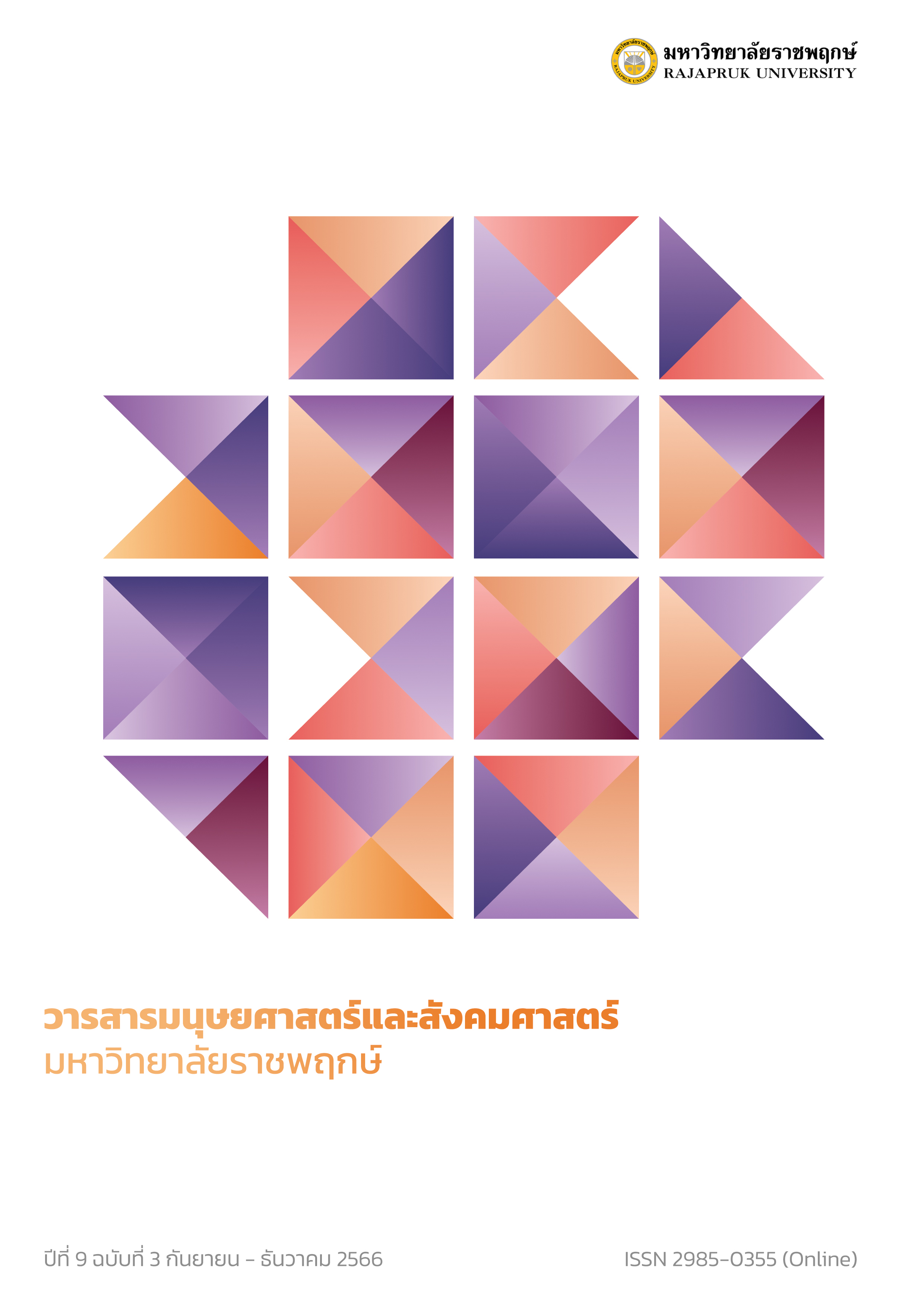The Development of Blended Learning Activities between Realistic Mathematics with Online Learning to Enhance Problem-Solving Ability and Mathematical Reasoning for Grade 5 Students
Main Article Content
Abstract
The objectives of this research were to 1) create and find the efficiency of the development of blended learning activities between realistic mathematics with online learning to enhance problem-solving ability and mathematical reasoning for grade 5 students, and 2) compare problem-solving abilities and mathematical reasoning it uses a blended learning activity that combines real-life math concepts with online learning. The sample group was grade 5 students in the second semester of the academic year 2021 at WatKokraet School, Kongkrailat District, Sukhothai Province, with 15 people. The tools used include a blended learning activity that combines real-life math concepts with online learning, and the quiz measures problem-solving and mathematical reasoning abilities. The statistic used to analyze the data was the mean, standard deviation, and t-test.
The results of the study showed that: 1) the development of blended learning activities between realistic mathematics with online learning to enhance the problem-solving ability and mathematical reasoning for grade 5, has four learning activities as follows, 1) percentage problem 2) price reduction problem 3) profit problem 4) loss problem the appropriateness was at the highest level. and the efficiency was 82.87/83.61, which was higher than the 80/80 criterion. 2) Grade 5 students could solve problems and reason in math. After class with blended learning activities between realistic mathematics with online learning higher than before with statistically significant at the .05 level.
Article Details
References
กระทรวงศึกษาธิการ. (2560). ตัวชี้วัดและสาระการเรียนรู้แกนกลาง กลุ่มสาระการเรียนรู้คณิตศาสตร์ (ฉบับปรับปรุงพ.ศ.2560) ตามหลักสูตรแกนกลางการศึกษาขั้นพื้นฐาน พุทธศักราช 2551. กรุงเทพฯ: สถาบันส่งเสริมการสอนวิทยาศาสตร์และเทคโนโลยี.
กิติโรจน์ ปัณฑรนนทกะ วิชัย เสวกงาม และ อัมพร ม้าคนอง. (2563). การพัฒนารูปแบบการเรียนการสอนตามแนวคิดกระบวนการคิดให้เป็นคณิตศาสตร์และการศึกษาคณิตศาสตร์ที่เชื่อมโยงกับชีวิตจริงเพื่อส่งเสริมความสามารถในการแก้ปัญหาทางคณิตศาสตร์ และความสามารถในการให้เหตุผลทางคณิตศาสตร์ของนักเรียนมัธยมศึกษาตอนต้น. วารสารครุศาสตร์ จุฬาลงกรณ์มหาวิทยาลัย, 48(3): 21-40.
เกศินี เพ็ชรรุ่ง. (2556). การพัฒนาชุดกิจกรรมการเรียนรู้ตามแนวการศึกษาคณิตศาสตร์ที่สอดคล้องกับชีวิตจริงเพื่อส่งเสริมมโนทัศน์และความสามารถในการเชื่อมโยงความรู้ทางคณิตศาสตร์. วิทยานิพนธ์ ปริญญามหาบัณฑิต จุฬาลงกรณ์มหาวิทยาลัย.
เจริญ ภูวิจิตร์. (2564) การจัดการเรียนรู้ทางออนไลน์อย่างมีประสิทธิภาพในยุคดิจิทัล (Efficiency in Online Learning Management of Digital Age). ค้นเมื่อวันที่ 16 มิถุนายน 2564, จาก http://www.nidtep.go.th/2017/publish/doc/20210827.pdf
ชนิดา จำปาอ่อน. (2562). การจัดการเรียนรู้ตามแนวคิดการศึกษาคณิตศาสตร์ที่เชื่อมโยงกับชีวิตจริง เพื่อส่งเสริมความสามารถในการแก้ปัญหาทางคณิตศาสตร์สำหรับนักเรียนชั้นมัธยมศึกษาปีที่ 6. วิทยานิพนธ์ ปริญญามหาบัณฑิต มหาวิทยาลัยศิลปากร.
มัฑนา ดงปาลี. (2557). การจัดกิจกรรมการเรียนรู้คณิตศาสตร์ที่เชื่อมโยงกับชีวิตจริง เรื่องความสัมพันธ์ระหว่างรูปขาคณิตสองมิติและสามมิติระดับชั้นมัธยมศึกษาปีที่ 1. วิทยานิพนธ์ ปริญญามหาบัณฑิต มหาวิทยาลัยเชียงใหม่.
รัตนะ บัวสนธ์. (2552). วิจัยเชิงคุณภาพการศึกษา. กรุงเทพฯ: จุฬาลงกรณ์มหาวิทยาลัย.
สถาบันส่งเสริมการสอนวิทยาศาสตร์และเทคโนโลยี. (2551). ทักษะ/กระบวนการทางคณิตศาสตร์. พิมพ์ครั้งที่ 2. กรุงเทพฯ: สถาบันส่งเสริมการสอนวิทยาศาสตร์และเทคโนโลยี.
Allen, I. E. and Seaman, J. (2005). Growing by Degrees: Online education in the United States, 2005. The Sloan Consortium. Retrieved on June, 16th, 2021, from http://www.sloanc.org/publications/survey/pdf/growing_by_degrees.pdf
Dickinson, P., Eade, F., Gough, S., & Hough, S. (2010). Using realistic mathematics education with low to middle attaining pupils in secondary schools. Proceedings of the British Congress for Mathematics Education, 5(1),3446. Retrieved on June, 20th, 2021, from https://www.researchgate.net/profile/Frank_Eade/publication/266487229_Using_Realistic_Mathematics_Education_with_low_to_middle_attaining_pupils_in_secondary_schools/links/54b7bd b70cf2bd04be33c4e0.pdf


